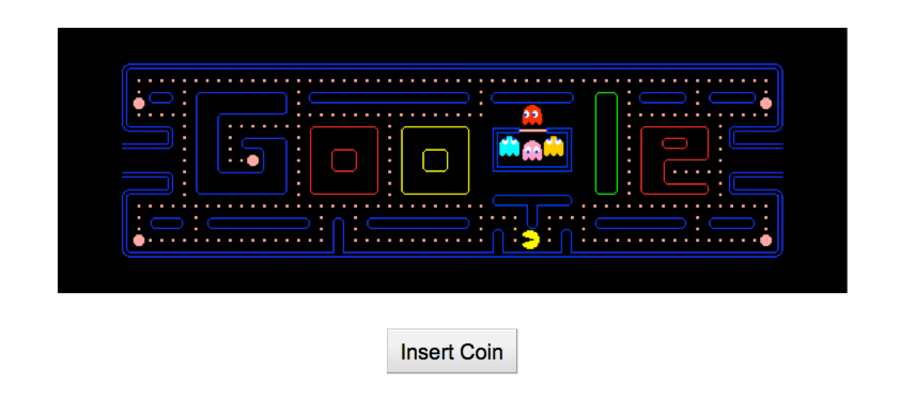On May 21, 2010, Googlers were greeted with the first-ever interactive Google Doodle: a celebration of 30 years of Pac-Man. The iconic Google letters were configured into the classic narrow passageways with neon dots, and when users clicked “insert coin” they could revisit their arcade days and play a round (or two or three or five) of Pac-Man. The description of the Doodle talked about senior Google designer Marcin Wichary’s childhood growing up watching his dad fix video game machines, and the “geopolitical” reach of this simple game at the time.
This is pretty indicative of Google’s Doodle philosophy: simple, fun, and a bit of history and personality thrown in for good measure.
The idea of swapping out Google's logo for a “doodle” started before the company even incorporated. In 1998, Google founders Larry Page and Sergey Brin went to Burning Man and placed a small stick figure behind the second “o”, letting users know they were out of the office and deep in the desert. The Google logo remained unadorned until 2000, when they asked their intern at the time (now head webmaster Dennis Hwang) to create a Doodle for Bastille Day. Though not the complex Pac-Man game of today, it was so popular that Google decided to continue decorating its homepage when the occasion arose.
Since then, Google has decorated more than 1,000 logos for everything from Claude Monet’s birthday to Pakistan’s Independence Day. Google says it chooses a variety of holidays, birthdays, and special events that both show off the personality of the company and its “love for innovation."
Google also holds logo design competitions for kids (the prize is a college scholarship and a $50,000 technology grant for their school) and even has a Google Doodle store that sells everything from T-shirts to stamps with any Google Doodle ever designed.
Got an idea for a Google Doodle? Send it to proposals@google.com. Who knows – your idea could be the next Google homepage. Need inspiration? Click on to see the next four best interactive Google Doodles.








